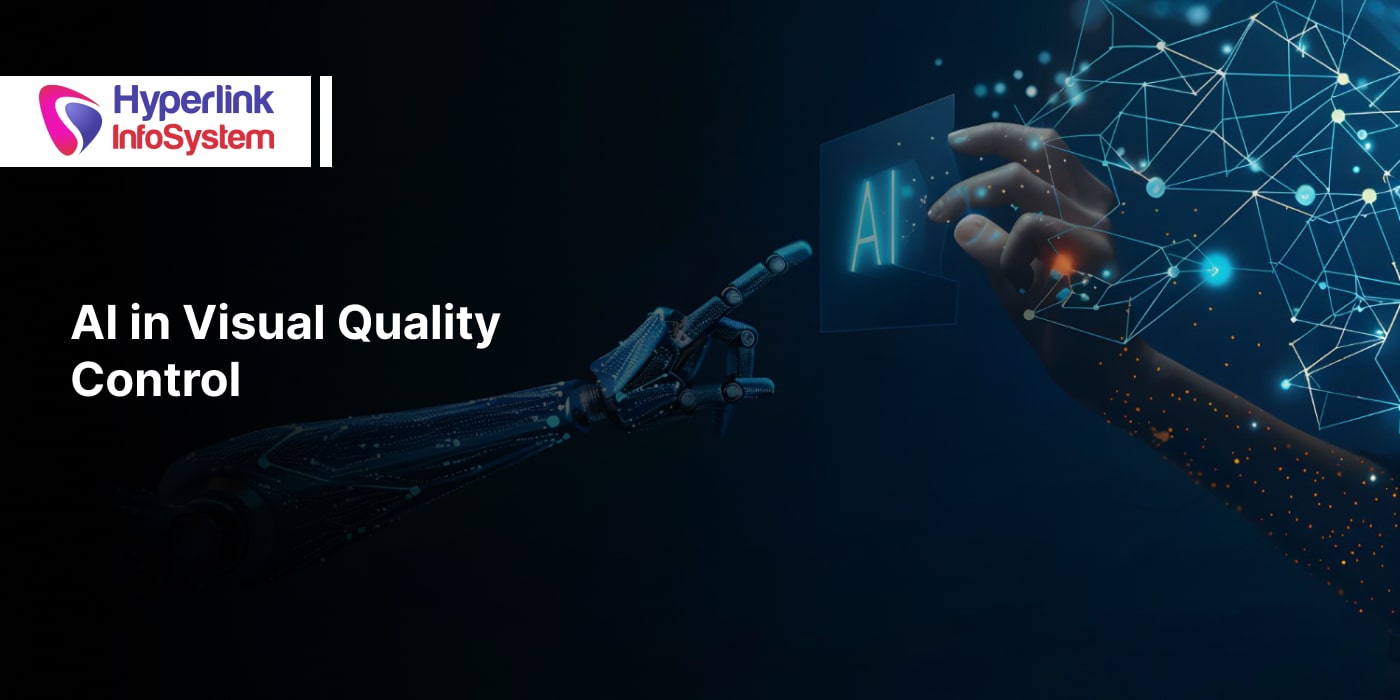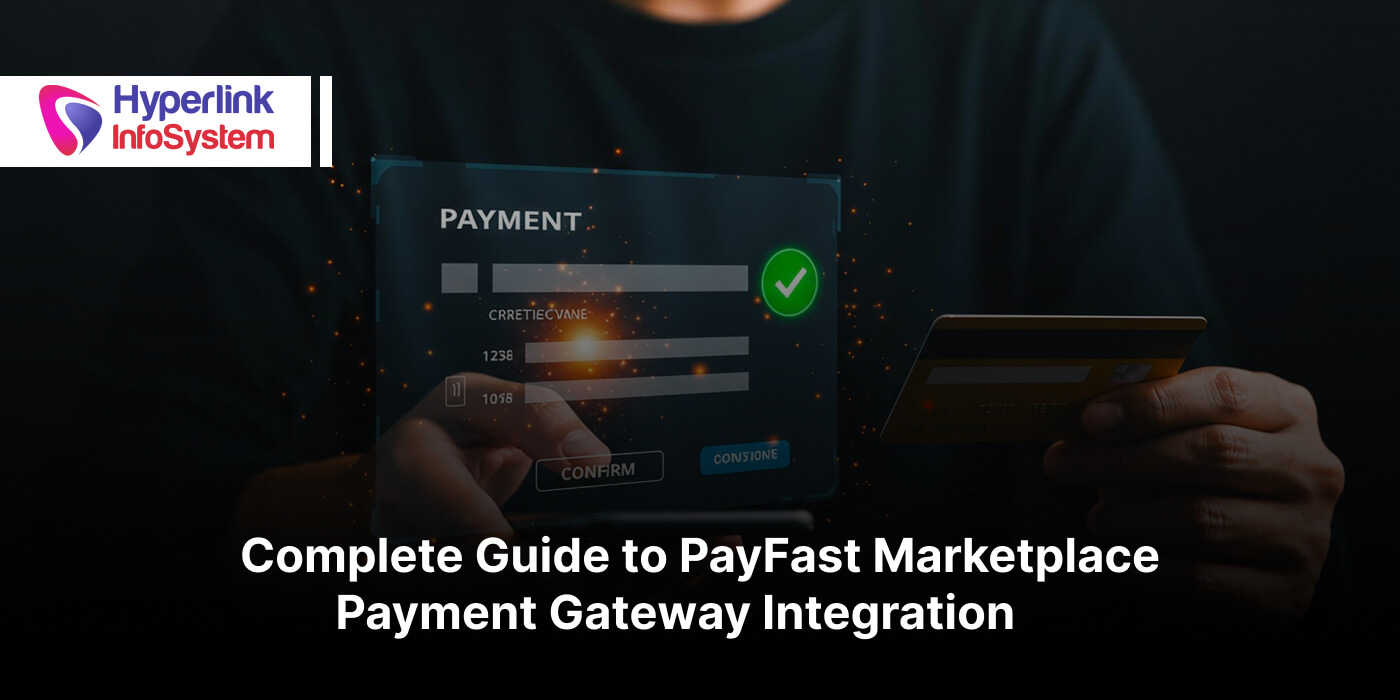How Does AI in Visual Quality Control Help Businesses Thrive?
Sep 2024

Visual quality control is a process of inspecting products or components in manufacturing and production environments to check for predefined quality standards. This visual quality control process focuses on finding defects, inconsistencies, imperfections, color mismatches, shape defects, or assembly errors.
There are human inspectors for the visual quality process who manually examine products on assembly lines. Companies hire these inspectors based on their experience and expertise to identify flaws. However, this manual process has its limitations and errors, such as variability in human judgment, fatigue, and inefficiency when there's a heavy workload, which can lead to errors or missed defects.
This is where the AI-based visual quality control method makes its Tom Cruise entry. In this respect, AI-based automatic inspection systems may guarantee much higher precision, speed, and consistent quality in examining products through advanced technologies such as computer vision and machine learning for overall effective and efficient quality control processing.
What Are the Challenges of the Conventional Method of Visual Quality Control?
Manual visual quality control methods depend heavily on human inspectors to examine products and components and check for any defects. Many inherent challenges with this process compromise the process's efficiency, accuracy, and scalability.
- Human Error and Variability
Humans are prone to errors due to distractions, workload, stress, or different perceptions. One person can identify something as a mistake but another person might overlook it. This variability leads to inconsistencies about the same product in the manual quality control process.
- Scalability
With increased production volume, businesses need to increase the number of human inspectors to keep up with the process. This process is time-consuming too and can not give the expected output in such cases.
- Exhaustion
These tasks are repetitive and eventually lead to exhaustion. An exhausted inspector would not draw his attention to minor details and it will eventually reflect on the overall result. This carelessness turns into missing defects and making incorrect judgments.
- Inconsistent Inspection Criteria
You can't be sure about the reliability of the quality control process. Different inspectors can have different interpretations of quality standards and this can result in inconsistency in the inspection process.
- Difficulty in Detecting Subtle Defects
Some small defects, like small surface irregularities or any color variation, are difficult to detect with human inspection. Due to this, defective products pass through the checking process and reach the customers. This leads to product returns and product recalls, which harm the brand's reputation.
- High Labor Costs
It is expensive to hire and maintain a team of skilled quality-checking inspectors. The cost of training, compensating, and retaining quality inspectors adds to the overall budget of the company.
- Adaption Problem
With changing production methods and materials, new types of defects emerge often. It is difficult for human inspectors to adapt to these new challenges quickly because, in some cases, it requires additional training and time to identify them.
These challenges highlight the limitations of conventional visual quality control methods and to overcome these challenges, more advanced and automated solutions are here to provide consistent and accurate quality control.
Also Read | AI in Banking
How Can AI Bring Revolution to the Visual Quality Control Method?
Behind AI bringing the revolution in visual quality control methods, two main technologies are building the foundation of this process: computer vision and machine learning. By using computer vision, AI systems "see" and analyze the products. These AI systems are equipped with advanced cameras and sensors that capture high-resolution images of products. Then AI algorithms process these images and detect defects based on the standard guidelines. AI can detect what a human eye cannot, whether it be a minor crack, a slight color variation, or an irregular shape. This process ensures accuracy. This will reduce the number of defective products on the market and also ensure a consistent quality standard through it all.
Moreover, AI-powered visual quality control systems can be adaptable to any situation because of their capabilities for continuous learning. AI systems can be trained on vast datasets and updated in real-time to recognize new types of defects. It is important to have such adaptability at this time when products and their processes are continuously evolving. Artificial intelligence for quality control is more adaptive with their continuous learning approach, which improves their accuracy and efficiency.
Also Read | AI in Manufacturing
How Does an AI-Based Visual Quality System Work?
AI-based visual quality systems work based on the combination of advanced AI technologies and algorithms that automate the inspection process. Here's a breakdown of how it works:
- Data Acquisition
The first step these AI systems take is to capture images or videos of the products. Most of them are equipped with high-resolution cameras and sensors, placed at strategic points, which capture every angle and detail of the product while it is moving through the inspection area. It also includes special imaging methods, such as infrared or 3D scanning, to be used in special cases.
- Image Processing
The AI system processes the photos and videos once they are clicked, enhancing and cleaning them for further study. In simpler terms, an AI system may adjust the brightness, contrast, or focus of the graphics to make sure every detail is visible.
- Feature Extraction
The AI system extracts key features from the relevant images. This includes detecting edges and shapes, measuring dimensions, or analyzing color patterns. Feature extraction is to focus on the specific attributes that determine whether a product meets quality standards.
- Defect Detection and Classification
Here, the AI system uses machine learning algorithms to compare the extracted attributes of the items with a database of known flaws and acceptable quality standards. Let's say the system has been trained to look for a few kinds of flaws, such as dents, scratches, or discolorations. If the defect is detected, then the system will categorize it.
- Decision-Making
The AI system makes a decision on product quality based on detection. If it passes, then the product advances on the production line; otherwise, it will be flagged and removed, or there will be an alert to the operators of a problematic product from the line by the system itself.
- Feedback and Learning
The system is always updating its algorithm depending on its performance in the past. For instance, if the continuous learning system keeps identifying a new sort of detection that is not included in the data used for training, it will adjust.
- Integration with Production Systems
AI-based visual quality control systems are often integrated with other production and quality management systems. In case of a product fault, the AI system can be set to automatically change machine settings or raise alarms during the whole production process.
Most AI-driven computer vision quality control systems work by capturing and processing high-resolution images of products, processing them through sophisticated machine learning algorithms that identify and classify defects, and making a real-time decision on product quality, improving themselves with the continuous processing of such data.
AI-Powered Visual Quality Control in Different Industries
AI is transforming various industries by enhancing the accuracy, efficiency, and consistency of the quality assurance process. Hire AI developers to implement this visual quality system into your business. Here's how AI in visual quality control is making a difference in various industries: Here's how:
- AI in Architecture
AI in architecture plays a significant role in ensuring that designs are executed with precision and accuracy. AI systems can be used to check the quality of materials and structural elements. AI-powered visual quality control can be integrated with Building Information Modeling (BIM) to monitor and verify the construction process.
- AI in Construction
AI in construction changes the whole aspect of what project management and implementation look like within the construction industry. The construction process takes place at a construction site, where a lot of complexity arises, as so many teams are working on multiple projects at the same time. These systems, through the use of drones, cameras, and multiple sensors, have the applicability of real-time project monitoring through sensors for any change in the arrangement. of concrete components from the blueprint, cracks of concrete, or any anomaly in the steel reinforcement.
- AI in Automotive
To inspect complex components like engine parts, transmissions, and body panels. AI-powered systems are capable of detecting very minor imperfections in the assembly, such as surface scratches or microcracks, among other defects. Paint finish inspection on automobile bodies can be done by AI for a perfect and even layer; any variation will detect problems in the painting process.
- AI in Electronics
Artificial intelligence in visual quality is very helpful in detecting the tiniest flaws. This industry has a great demand for very accurate precision in their quality control methods. With the help of AI, systems can check printed circuit boards, semiconductors, and other components too and detect the tiniest defects.
- AI in Food and Beverages
It is so important to deliver thoroughly checked food and beverages to customers for their safety and brand reputation. AI-based systems can check the packaging and also check the color, size, and form of food and can provide results based on the trained data.
- AI in Pharmaceuticals
AI systems in quality control systems can check the medicines, capsules, their formation, weight, shape, color, and packaging. It will help identify defects more efficiently than the manual quality control method.
Artificial intelligence quality control is turning out to be the real deal. It gives assurance of quality at higher levels while reducing cost and offering efficiency. Contact an AI development company for a solution well-suited to your industry.
Conclusion
AI in visual quality control is reshaping the manufacturing and production processes across various industries. It enhances accuracy, consistency, and efficiency. By hiring dedicated developers, you can address the AI solution in your business to overcome the challenges that traditional quality control methods face.
With AI technology growing day by day, its application in visual quality control is only going to spread across the globe. AI systems are smart enough to learn and adapt in real-time so that they can match the pace of the changing demands of today's businesses. Hire AI developers to integrate AI into visual quality control methods for your business. You can gain a competitive edge in the marketplace through increased efficiency and reduced operational costs with AI.
AI-based visual quality control works toward wiser, more sustainable construction and production processes. Understanding how AI can become a part of your business for innovative success requires contacting AI development solution providers.
Frequently Asked Questions
AI can automatically fetch and detect defects in quality control by using advanced technology. It also eliminates human errors and provides a more efficient quality control method.
AI needs a large dataset for training and learning. This dataset includes images of good and defective products, dimensions, or other important information required to check the quality.
There are many AI development companies out there. Choose the right company according to their portfolio, experience in the same area, and client testimonials. This shall help you select an AI development company to implement artificial intelligence visual quality into your business.
Latest Blogs

Is BlockChain Technology Worth The H ...
Unfolds The Revolutionary & Versatility Of Blockchain Technology ...


IoT Technology - A Future In Making ...
Everything You Need To Know About IoT Technology ...

Feel Free to Contact Us!
We would be happy to hear from you, please fill in the form below or mail us your requirements on info@hyperlinkinfosystem.com
Hyperlink InfoSystem Bring Transformation For Global Businesses
Starting from listening to your business problems to delivering accurate solutions; we make sure to follow industry-specific standards and combine them with our technical knowledge, development expertise, and extensive research.
4500+
Apps Developed
1200+
Developers
2200+
Websites Designed
140+
Games Developed
120+
AI & IoT Solutions
2700+
Happy Clients
120+
Salesforce Solutions

40+
Data Science


















